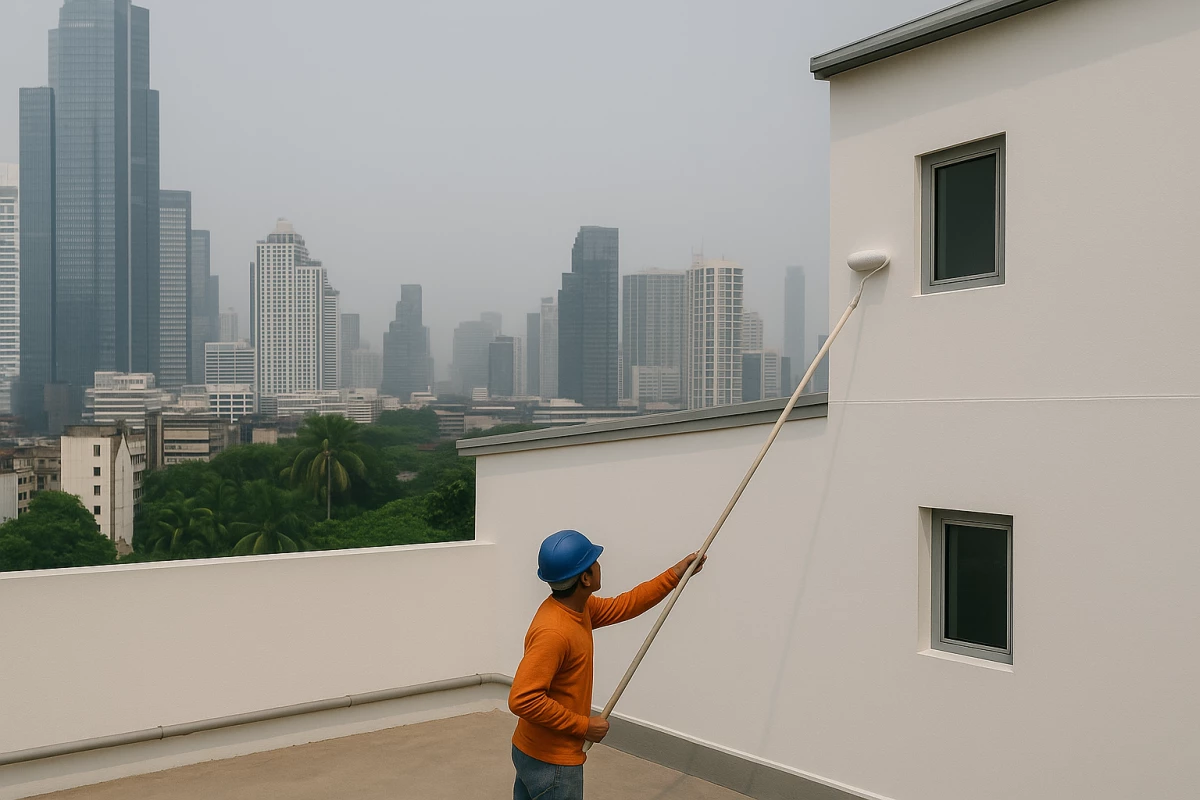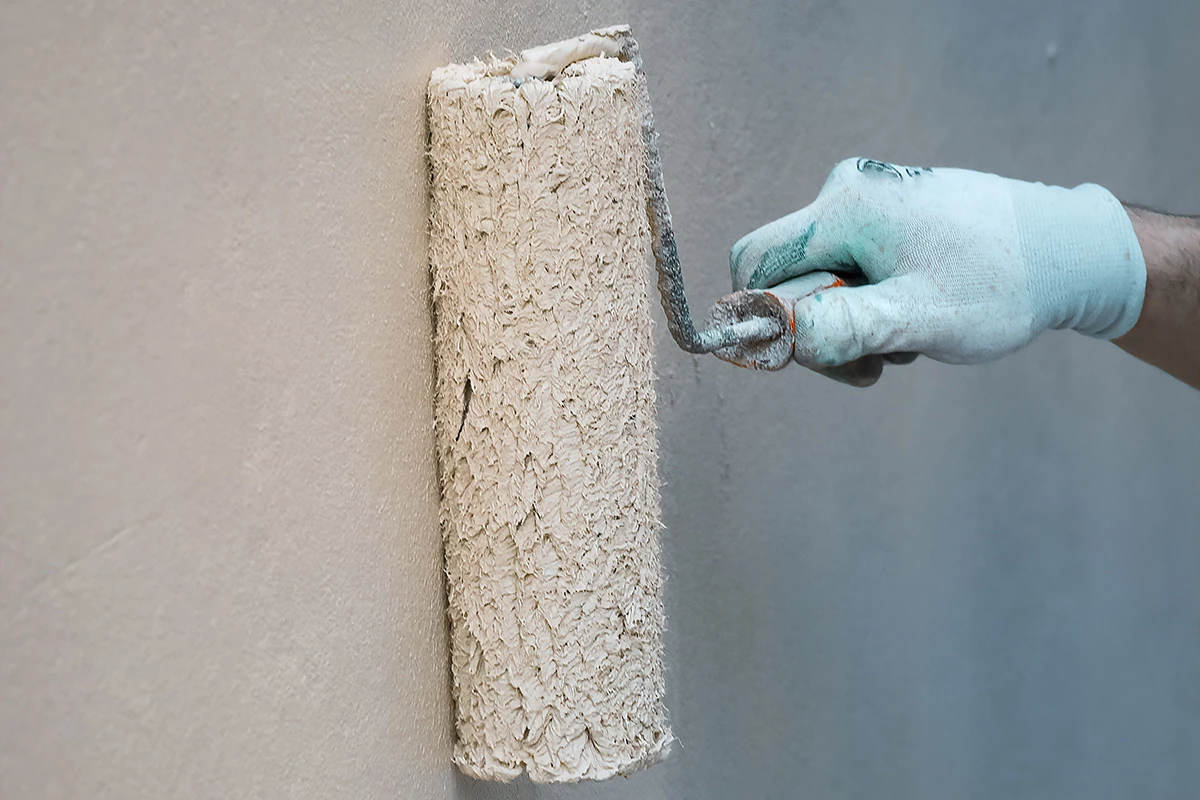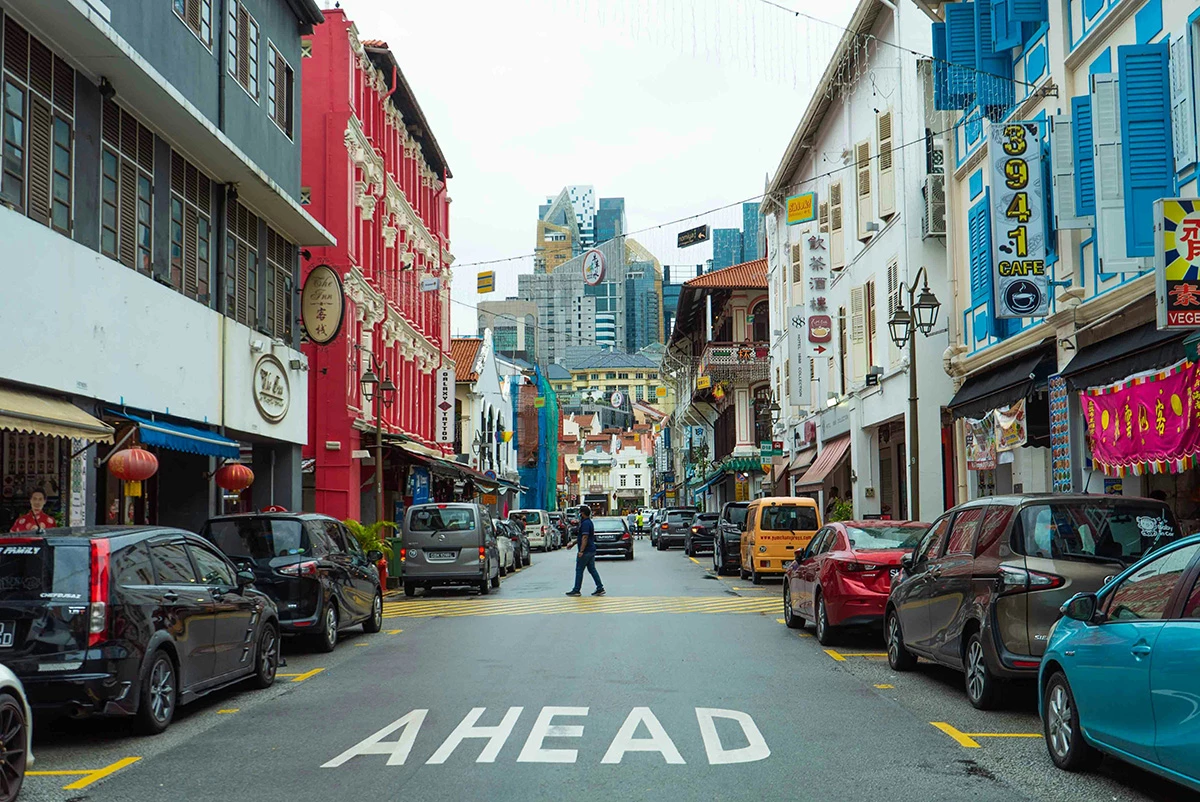A new kind of paint might be the key to cooling homes in humid climes like Singapore. Researchers based in the island country found their custom white paint, specially developed to 'sweat,' significantly reduced the need for air conditioning, while also maintaining its appearance for years.
The major challenge with cooling in humid areas is that water vapor in the air holds on to heat. That means air conditioning systems inside buildings are up against both the region's sensible heat (temperature) and the latent heat (moisture) from the air.
Naturally, buildings need all the help they can get to cool down. That's where paint comes in. We already have commercial paints with radiative cooling properties that remove heat from surfaces, and solar reflective paint that reflects sunlight to cool buildings to a certain extent. The researchers' cement-based paint, combines radiative cooling, solar reflection, and evaporative cooling to achieve significantly better cooling.
This paint has been developed to have a porous structure, so that it can hold water and slowly release it, similar to how our bodies sweat when we get hot.
The team of material scientists tested their concoction by painting three houses in Singapore: one with bog-standard white paint, one with commercial radiative cooling paint, and one with the new formula.
The researchers observed that their paint helped reduce the electricity consumed by the home's air conditioning systems by 30-40%. That's because of the evaporative cooling effect, as well as the strong reflective cooling: it reflected 88%-92% of sunlight.
Plus, after two years of the island's hot and rainy weather, the paints on the first two houses had turned yellow, while the cement-based paint remained white thanks to nanoparticles incorporated into the formula for enhanced reflectivity. The team published its findings in the journal Science earlier this month.
That could help make a dent in the high figure of 60% of energy that buildings use to cool their internal spaces, especially in warmer places like Singapore and the Middle East. The researchers note that it could also help combat what's called the heat island effect, which affects dense urban areas that have buildings and roads absorbing and re-emitting heat and causing temperatures to rise.
Want to see more innovations in paint? Check out this one that kills germs and is great for use in hospitals, and this one formulated with living cyanobacteria to produce oxygen and capture carbon dioxide.
Source: Science via ScienceNews






